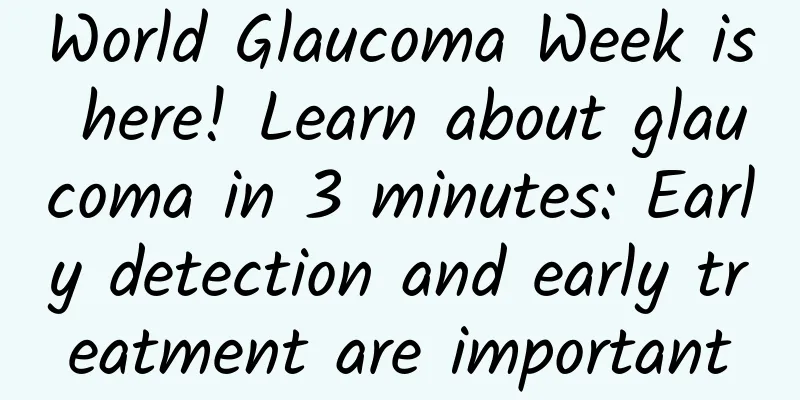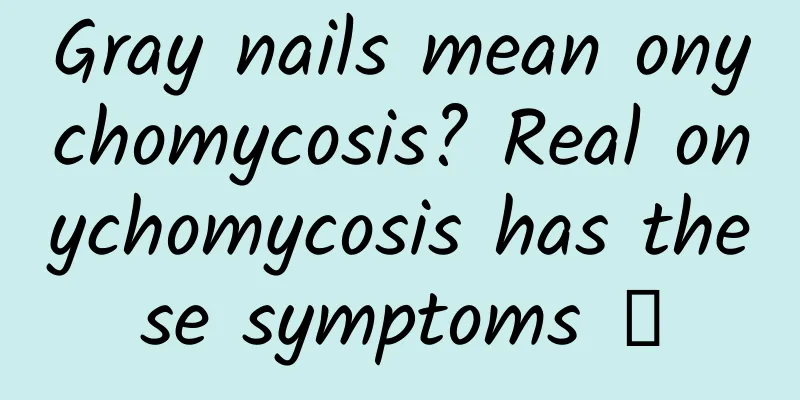This drug can be used to prevent heart attacks, but no one believed it at first because...

|
Aspirin (chemical name: acetylsalicylic acid) is probably the most famous drug in medical history. It has a wide range of therapeutic effects and a long history. It is the most commonly used of all drugs. It was once recorded in the Guinness Book of World Records as the most commercially successful drug, with annual sales of more than 30 million tablets in the United States alone. The famous Spanish philosopher José Ortega y Gasset said in his monograph "The Age of Aspirin" that aspirin is "a blessing brought to mankind by civilization." Its efficacy has been clearly defined as antipyretic, analgesic, anti-inflammatory, anti-rheumatic, myocardial infarction prevention, and stroke prevention; the areas that are still under research and have great prospects include: anti-cancer, anti-hypertension, kidney protection... When it is used for treatment, every user will have a very clear perception, such as pain relief and body temperature returning to normal. But when it is used for prevention, such as preventing heart attacks, it is difficult for individual users to feel whether it is effective. So, how did the medical community confirm this effect? Copyright images in the gallery. Reprinting and using them may lead to copyright disputes. 1 The beginning of this story originated from a mistake and an accident... In the 1940s, tonsillectomy for children was very popular. Now we know that a considerable number of these tonsils were not necessary, which can be regarded as a detour in the history of surgery. To relieve pain after tonsillectomy, Dr. Lawrence Craven (1883-1957) recommended giving patients chewing gum containing aspirin. Craven, who holds a doctorate in medicine, is dedicated to his patients, has a sharp mind and is good at finding problems. On several occasions, he found that some patients had severe bleeding after eating this gum, and some even came back to the hospital for help. He did not miss such abnormalities. By asking the patients about their conditions, he found that all those who had bleeding had eaten too much chewing gum. He recommended four pieces of gum per day to his patients, but one patient with severe bleeding actually chewed 20 pieces - which is equivalent to taking 300 mg of aspirin. For such adverse outcomes, most doctors would probably just advise patients not to overeat to avoid severe bleeding, but Craven thought one step further than other doctors. He thought that men and women take different approaches when facing pain. Women are more likely to take aspirin to relieve pain, while men feel that taking medicine frequently will undermine their masculinity. So, what differences will such different medication habits lead to? At that time, the medical community had observed that the incidence of myocardial infarction was higher in men than in women. Craven inferred that because women used more aspirin, their risk of myocardial infarction was lower than that of men. Given the medical community's understanding of aspirin's pharmacological effects at the time, Craven's inference was a wild guess. Why could aspirin prevent myocardial infarction? Craven thought, I don't care why, it works anyway, everyone listen to me, let's try it together. In 1953, he published this idea in the Mississippi Valley Medical Journal, and not surprisingly, no one in his field responded to it. Why should I believe you? Craven was so angry that he died of a heart attack in 1957. I don’t know if he died of anger because his views were not recognized by his peers. But his death made many people think that aspirin is useless. After all, if it was useful, how could you die of a heart attack? 2 When we look back at the materials left by Craven, we will find that although it is a bit regrettable that Craven's foresight was ignored by the times, this is not entirely a story of a major discovery being deliberately suppressed by the stubbornly conservative mainstream medical community. Craven's proposition did not attract the attention of his peers, and the problem mainly lies with himself. We know today that Craven was correct in his suspicion that aspirin could prevent heart attacks, but his entire reasoning and experimental design were full of loopholes. In his paper, Craven claimed that he persuaded 8,000 people to follow his advice and take two aspirin tablets orally every day. During the eight years of observation, none of the people who followed the doctor's advice suffered a heart attack or a stroke. Therefore, taking aspirin is a safe and reliable method to prevent thrombosis. Such a conclusion, combined with clever propaganda, would seem to be enough to convince the general public. It would seem to be a miracle effect, but for those who have received medical education, it is far from enough. When Craven began to conduct drug trials in the population, the method of randomized double-blind controlled trials was already familiar to quite a few doctors. In 1948, under the leadership of the British Medical Research Council, the world's first clinical randomized controlled trial (RCT) was carried out, with the main purpose of determining the effect of streptomycin in the treatment of tuberculosis. After 6 months, 7% of the patients in the streptomycin group and 27% of the patients in the bedridden group died. Imaging showed that 51% of the patients in the streptomycin group and 8% of the patients in the bedridden group had significant improvement in their condition. 18% of the patients in the streptomycin group and 25% of the patients in the bedridden group had slight improvement. The improvement in clinical symptoms of the patients in the streptomycin group was also more obvious than that of the patients in the bedridden group. The tuberculosis test results of 8 patients in the streptomycin group and 2 patients in the bedridden group were negative. This trial confirmed the efficacy of streptomycin once and for all, and since then, RCT has become the gold standard for determining drug efficacy. Progress in medical history, Image source: China Biomedical Engineering Magazine In contrast, Craven's experiment had no control group and no blinding method. This led to a problem. When he interpreted the data, he was definitely influenced by his subjective opinion. Let's look back at his statement: "During the 8-year observation period, no one who followed the doctor's advice had a heart attack or a stroke." All the secrets are in this sentence. In fact, there were deaths among these 8,000 people. If the patient really died of a heart attack, then Craven believed that the patient did not strictly follow the recommendation of taking two aspirin tablets every day. If the autopsy proved that the patient died of bleeding and other problems, then Craven believed that aspirin did have the effect of preventing myocardial infarction. You see, although the patient died, the cause of death was not a heart attack. This kind of explanation strategy of blocking both ends is exactly the same as that of street fortune tellers. How come you are always right? If we interpret Craven's data from a different perspective, then can we also conclude that those who died from myocardial infarction showed that aspirin was ineffective, and those who died from bleeding showed that the side effects of aspirin were terrible? In fact, it wasn't until the 1980s that rigorous scientific data solidly demonstrated that aspirin could prevent heart attacks. 3 Looking back on this history, we can't help but feel regretful. If this effect had been confirmed 20 years earlier, how many lives would have been saved? But if we look beyond this single incident, we should also feel fortunate that as modern medicine has gradually matured, doctors have become less likely to blindly believe in the magic of drugs. On the surface, it seems that rigid scientific norms have delayed an important discovery, but such scientific norms have in fact prevented wider-scale drug abuse and avoided many tragedies. You know, the blind promotion of thalidomide for anti-nausea in pregnant women resulted in the tragic death of a large number of seal babies in the 1960s. After 1963, there were gradually sporadic reports suggesting that aspirin could antagonize platelet aggregation. In 1970, a randomized double-blind controlled trial began to recruit patients. However, this clinical trial, which aimed to verify whether aspirin could prevent myocardial infarction, did not seem to be the result of Craven's revelation. The main promoter of the experiment was John O'Brien, a British hematologist whose main research area was thrombotic diseases. During his research, he found that many drugs had the effect of preventing platelet aggregation, but while achieving this effect, they were basically enough to kill people. In comparison, aspirin is much safer. In 1963, he published a paper showing that aspirin can prevent platelet aggregation. Five years later, he published an article in The Lancet suggesting a trial on aspirin to prevent myocardial infarction - this was regarded as the starting point for a series of subsequent clinical trials to verify the preventive effect of aspirin. In the UK at that time, an average of one heart attack occurred every year for every 200 people. According to O'Brien's estimate, in order to obtain reliable data from the clinical trials of aspirin, at least tens of thousands of volunteers would be needed. This would result in huge trial costs and it would be difficult to obtain funding and policy support. O'Brien's colleague Peter Elwood came up with a solution to this problem: if the trial only recruited patients at high risk of myocardial infarction (people who had suffered a heart attack and were likely to have another one), the number of volunteers needed would be greatly reduced. Of course, the experimental process was not smooth, but truly valuable exploration and verification began. Craven's conjecture was finally verified by the medical community after rigorous clinical trials. What this past event has taught us to think about is that it is very rare for a drug’s effect to be so obvious that it can be seen with the naked eye, so rigorous clinical trials are very important. Copyright images in the gallery. Reprinting and using them may lead to copyright disputes. Since myocardial infarction is not 100% fatal, the value of aspirin is difficult to detect. Due to the effect of aspirin, the mortality rate of myocardial infarction has dropped from 12% to 9%. It is not difficult to understand that any top cardiologist is unlikely to notice this 3% change in clinical work. If the 3% figure doesn't make you feel impressive, then do you think that aspirin is more important if it reduces the risk of death by a quarter? It is estimated that if used properly, aspirin can save 100,000 lives worldwide each year. In fact, O'Brien did not figure out why aspirin can prevent platelet aggregation. It was the British biochemist John Vane (1927-2004) who revealed this mechanism. For this contribution, Vane won the 1982 Nobel Prize in Physiology or Medicine. Since the mechanism of action of the drug was also not revealed, why was it that O'Brien was able to start the fate of aspirin, while Craven could only die of anger? In addition to the fact that Craven's experimental design was not rigorous enough as mentioned above, another important reason was that O'Brien was a famous researcher working in a scientific research institution. His paper was published in the prestigious "Lancet", while Craven was just an unknown ordinary doctor. Who would have heard of a small-brand magazine like the "Mississippi Valley Medical Journal"? Author: Li Qingchen, deputy chief physician of thoracic surgery, Harbin Children's Hospital Review丨Sun Yifei Director of the Medical Education History Research Office of Hebei Medical University |
<<: Are you affected by these early signs of uremia?
>>: From symptoms to treatment: A comprehensive look at Parkinson's disease
Recommend
How long does it take to give birth after the induced labor injection?
The pregnant woman will give birth 36-72 hours af...
What should women drink to make their complexion better?
Female friends nowadays are troubled by work and ...
What are the early symptoms of herpes in women?
Herpes is the most common skin disease in our liv...
Pregnant women's checkup schedule
Whether you are an older mother or in the normal ...
How much does Chow Tai Fook's silver cat's claw lucky beads cost? How to match Chow Tai Fook's silver cat's claw pendant to look good
Chow Tai Fook's silver cat claw lucky beads a...
What happens if I have a pimple on my labia?
The female genitals are the most private and vuln...
Hormones secreted by the ovaries
The ovaries and uterus constitute an important re...
What should I pay attention to if I have pelvic inflammatory disease?
Pelvic inflammatory disease is an inflammation of...
Causes of bloody leucorrhea
If the leucorrhea is like tofu dregs and is blood...
When to remove the IUD? Remove the IUD according to the situation
Many women delay removing the IUD placed in their...
Can I eat purslane when I am pregnant?
Pregnancy is the happiest and most special stage ...
Whether a woman is old or not depends on 3 parts
Which parts of the body change and cause female w...
What is the standard height and weight for a 13-year-old girl?
The general proportion of women's measurement...









